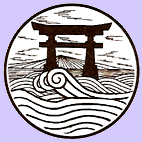| |


"In the Art of Peace we never attack. An attack is proof that one is out of control. Never run away from any kind of challenge, but do not try to surpress or control
an opponent unnaturally. Let attackers come any way they like and then blend with them. Never chase after opponents. Redirect each attack and get firmly behind it."
O-Sensei Morehei Ueshiba
The founder, Master Morehei Ueshiba (O-Sensei) - 1883
to 1969
AIKIDO is a relatively new self-defense art founded in Japan
by O-Sensei (Great Teacher). As a young man he applied himself
to many years of arduous training in Budo (Martial Arts), mastering
Jui-Jutsu, the use of the spear (Yari) and staff (Jo) and enjoyed
the reputation of being unbeatable with the sword (Bokken).
O-Sensei also delved deeply into religion, studying Zen Buddhism
and Shinto. Although he became very strong and won many matches
he was troubled by the idea that winning at someone else's expense
was not really winning and came to realise that true self defense
was not winning over others, but winning over the discord
within oneself.
As an acknowledged Master he began to practice movements, exploring
them deeply, searching physically and mentally, and spending
long hours in meditation.
As a result, AIKIDO was born to divert harm from oneself while
not inflicting permanent injury on an aggressor. As AIKIDO developed,
it became clear that it was not only an effective means of self-defense,
but also a way to interperate one's attitude to life.
The meaning of the word Aikido
The word AIKIDO in Japanese is made up of three characters,
or Kanji. The first and most important is 'AI' which means harmony;
the second is 'KI' which means spirit or soul and
the third id 'DO' - being the way or path (as in Ken-do or Ju-do)
to signify that the study of a martial art does not only involve
self defense techniques but also includes positive character
building ideas which can be incorporated into daily life.
The Philosophy of Aikido
Although AIKIDO is primarily a self-defense art, it takes as
the basis of its philosophy the idea of being in harmony with
the opponent, rather than being in conflict. In AIKIDO students
practice alignment of their posture and movement with that of
their attacker, enabling redirection of the attackers power leading the
opponent to a pin or throw. Because timing, balance and angles
are used, rather than just physical strength it
enables the person who is attacked to control an opponent
without comparable aggression and is very suitable for both men and
women with a range of ages and physical abilities.
Etiquette
Like the practice of AIKIDO techniques, etiquette trains the
spirit through the observance of outward forms. Etiquette is
that aspect of AIKIDO training that specifically addresses safety,
mutual trust and respect. The format used in most dojos originates
in the traditional Japanese courtesy and generally involves a series
of bows. As with techniques, etiquette is learned over time from the Sensei
and by copying fellow students. |
|

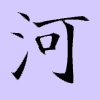
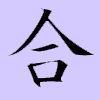
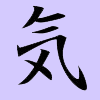
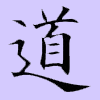
|
|







